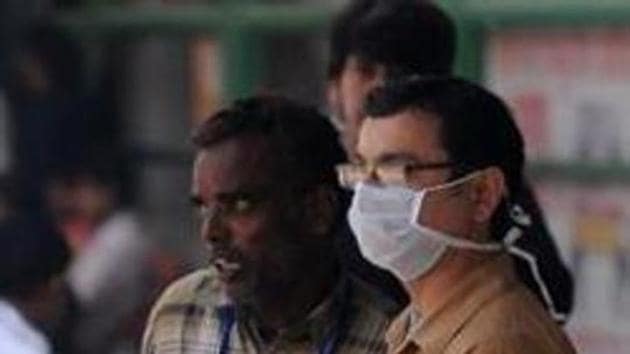Pollution a public health disaster, needs a concerted combat strategy
The air pollution conversation in India usually develops around the start of winter. This coincides with two episodic events, i.e., Diwali and crop burning. The conversation ends around the new year, which again coincides with the change in weather.
I am writing this article after starting a five-day course of antibiotics, as advised by my ENT specialist. The advice also includes wearing a mask. He was clear that this is nothing to do with the change of season or last Sunday’s thunderstorm, but the level of air pollution, as the city air continues to remain toxic. While my ENT was precise with his advice and observation, I wonder, if we, including policy makers, have really understood the impact of air pollution on human health?

I, unfortunately, think not. The air pollution conversation in India usually develops around the start of winter. This coincides with two episodic events, i.e., Diwali and crop burning. The conversation ends around the new year, which again coincides with the change in weather. However, pollution does not disappear for the rest of the year, as we often think.
For example, Gurugram had only three good air quality days in all of 2018. Yes, three good air quality days out of 365 days!
So, while we may doubt the data or argue that there is no conclusive evidence of the impacts of air pollution on public health, the fact of the matter is that all new data and studies are suggesting that air pollution is a much bigger problem than we anticipated. Let me give three recent examples:
India is the diabetes capital of the world, with over 5 crore people suffering from this chronic disease. It’s a condition wherein the body cannot produce insulin. Changing lifestyles and diets have often been blamed for this disease but air pollution could also be a reason. A research by the Chinese Academy of Medical Sciences’ Fuwai Hospital and Emory University from USA showed that for every 10 cubic metres of long-term exposure of PM2.5, the risk of diabetes increased by almost 16%. PM2.5 are particulate matter that are less than 2.5 microns and includes toxins such as sulphate black carbons and sulphates. These particles can penetrate deep into the lungs and have also been associated with lung cancer, chronic bronchitis, heart diseases but this new study also links them to diabetes. It is estimated that by 2030, nearly 9% of the India’s population is likely to suffer from diabetes. This is surely a large number to ignore.
So, before we doubt data, as we normally do, and, in this case, it is Chinese data, numerous empirical research and data shows that air pollution is a serious issue in India. According to recent data collected by an IT firm and a travel portal for their employees in Gurugram, about half the respondents in the survey of these two companies confirmed that someone in their families have suffered from air quality related diseases in the last one year. Around threefourth of the employees suggested to move out of Delhi due to winter smog and an equal number of employees preferred to skip the annual increment in lieu of better air.
What was even more surprising that on an average the family spends around ₹15,000 per annum for treating air quality related diseases. As per NASSCOM, there are 3.5 lakh IT BPO jobs in Delhi-NCR and assuming the same rates are applicable, this means that ₹260 crore is spent every year on air pollution related illnesses. This is only by the IT BPO companies. If one adds other employees, the number will be hugely significant. Also, the expenditure comes from the employees’ pay, putting them on a huge financial strain.
The World Health Organization’s report on air pollution and child health highlights damaging impact of air pollution on health and survival of children. The report estimates that 180 crore or 93% of world’s children breathe toxic air. A third of these are children are under the age of five.
The result is that around 7 lakh children under the age of five die every year due to air pollution. Also, the problem is much more acute in India as the WHO report indicates that 14 of the 15 most polluted cities in the world are in India. WHO’s study estimates that 1 in 10 children, under the age of five, dies in India due to air pollution.
The number is in excess of over one lakh a year. In addition, air pollution is also responsible for cancer in children, asthma, pneumonia and other types of acute lower respiratory diseases.
This clearly shows the impact of air pollution on health and survival of children.
A couple of days ago, London rolled our ultra-low emission zone program with the objective to reduce road transport emissions almost half. It’s time for Delhi-NCR take this fight against air pollution and be the champion for change.
transport, WRI India






